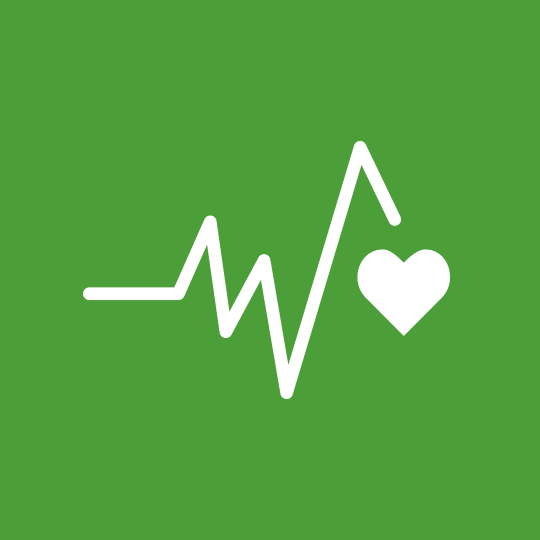3 GOOD HEALTH & WELL-BEING
Ensure healthy lives and promote well-being for all at all ages
Global Goals 3/17
TARGETS
3.1. By 2030, reduce the global maternal mortality ratio to less than 70 per 100,000 live births
3.1.1. Maternal mortality ratio
3.1.2. Proportion of births attended by skilled health personnel
3.2. By 2030, end preventable deaths of newborns and children under 5 years of age, with all countries aiming to reduce neonatal mortality to at least as low as 12 per 1,000 live births and under-5 mortality to at least as low as 25 per 1,000 live births3.1.2. Proportion of births attended by skilled health personnel
3.2.1. Under-five mortality rate
3.2.2. Neonatal mortality rate
3.3. By 2030, end the epidemics of AIDS, tuberculosis, malaria and neglected tropical diseases and combat hepatitis, water-borne diseases and other communicable diseases3.2.2. Neonatal mortality rate
3.3.1. Number of new HIV infections per 1,000 uninfected population, by sex, age and key populations
3.3.2. Tuberculosis incidence per 1,000 population
3.3.3. Malaria incidence per 1,000 population
3.3.4. Hepatitis B incidence per 100,000 population
3.3.5. Number of people requiring interventions against neglected tropical diseases
3.4. By 2030, reduce by one third premature mortality from non-communicable diseases through prevention and treatment and promote mental health and well-being3.3.2. Tuberculosis incidence per 1,000 population
3.3.3. Malaria incidence per 1,000 population
3.3.4. Hepatitis B incidence per 100,000 population
3.3.5. Number of people requiring interventions against neglected tropical diseases
3.4.1. Mortality rate attributed to cardiovascular disease, cancer, diabetes or chronic respiratory disease
3.4.2. Suicide mortality rate
3.5. Strengthen the prevention and treatment of substance abuse, including narcotic drug abuse and harmful use of alcohol3.4.2. Suicide mortality rate
3.5.1. Coverage of treatment interventions (pharmacological, psychosocial and rehabilitation and aftercare services) for substance use disorders
3.5.2. Harmful use of alcohol, defined according to the national context as alcohol per capita consumption (aged 15 years and older) within a calendar year in litres of pure alcohol
3.6. By 2020, halve the number of global deaths and injuries from road traffic accidents 3.73.5.2. Harmful use of alcohol, defined according to the national context as alcohol per capita consumption (aged 15 years and older) within a calendar year in litres of pure alcohol
3.6.1. Death rate due to road traffic injuries
3.7. By 2030, ensure universal access to sexual and reproductive health-care services, including for family planning, information and education, and the integration of reproductive health into national strategies and programmes3.7.1. Proportion of women of reproductive age (aged 15-49 years) who have their need for family planning satisfied with modern methods
3.7.2. Adolescent birth rate (aged 10-14 years; aged 15-19 years) per 1,000 women in that age group
3.8. Achieve universal health coverage, including financial risk protection, access to quality essential health-care services and access to safe, effective, quality and affordable essential medicines and vaccines for all3.7.2. Adolescent birth rate (aged 10-14 years; aged 15-19 years) per 1,000 women in that age group
3.8.1. Coverage of essential health services (defined as the average coverage of essential services based on tracer interventions that include reproductive, maternal, newborn and child health, infectious diseases, non-communicable diseases and service capacity and access, among the general and the most disadvantaged population)
3.8.2. Number of people covered by health insurance or a public health system per 1,000 population
3.9. By 2030, substantially reduce the number of deaths and illnesses from hazardous chemicals and air, water and soil pollution and contamination3.8.2. Number of people covered by health insurance or a public health system per 1,000 population
3.9.1. Mortality rate attributed to household and ambient air pollution
3.9.2. Mortality rate attributed to unsafe water, unsafe sanitation and lack of hygiene (exposure to unsafe Water, Sanitation and Hygiene for All (WASH) services)
3.9.3. Mortality rate attributed to unintentional poisoning
3.a. Strengthen the implementation of the World Health Organization Framework Convention on Tobacco Control in all countries, as appropriate3.9.2. Mortality rate attributed to unsafe water, unsafe sanitation and lack of hygiene (exposure to unsafe Water, Sanitation and Hygiene for All (WASH) services)
3.9.3. Mortality rate attributed to unintentional poisoning
3.a.1. Age-standardized prevalence of current tobacco use among persons aged 15 years and older
3.b. Support the research and development of vaccines and medicines for the communicable and non-communicable diseases that primarily affect developing countries, provide access to affordable essential medicines and vaccines, in accordance with the Doha Declaration on the TRIPS Agreement and Public Health, which affirms the right of developing countries to use to the full the provisions in the Agreement on Trade-Related Aspects of Intellectual Property Rights regarding flexibilities to protect public health, and, in particular, provide access to medicines for all3.b.1. Proportion of the population with access to affordable medicines and vaccines on a sustainable basis
3.b.2. Total net official development assistance to medical research and basic health sectors
3.c. Substantially increase health financing and the recruitment, development, training and retention of the health workforce in developing countries, especially in least developed countries and small island developing States3.b.2. Total net official development assistance to medical research and basic health sectors
3.c.1. Health worker density and distribution
3.d. Strengthen the capacity of all countries, in particular developing countries, for early warning, risk reduction and management of national and global health risks3.d.1. International Health Regulations (IHR) capacity and health emergency preparedness



